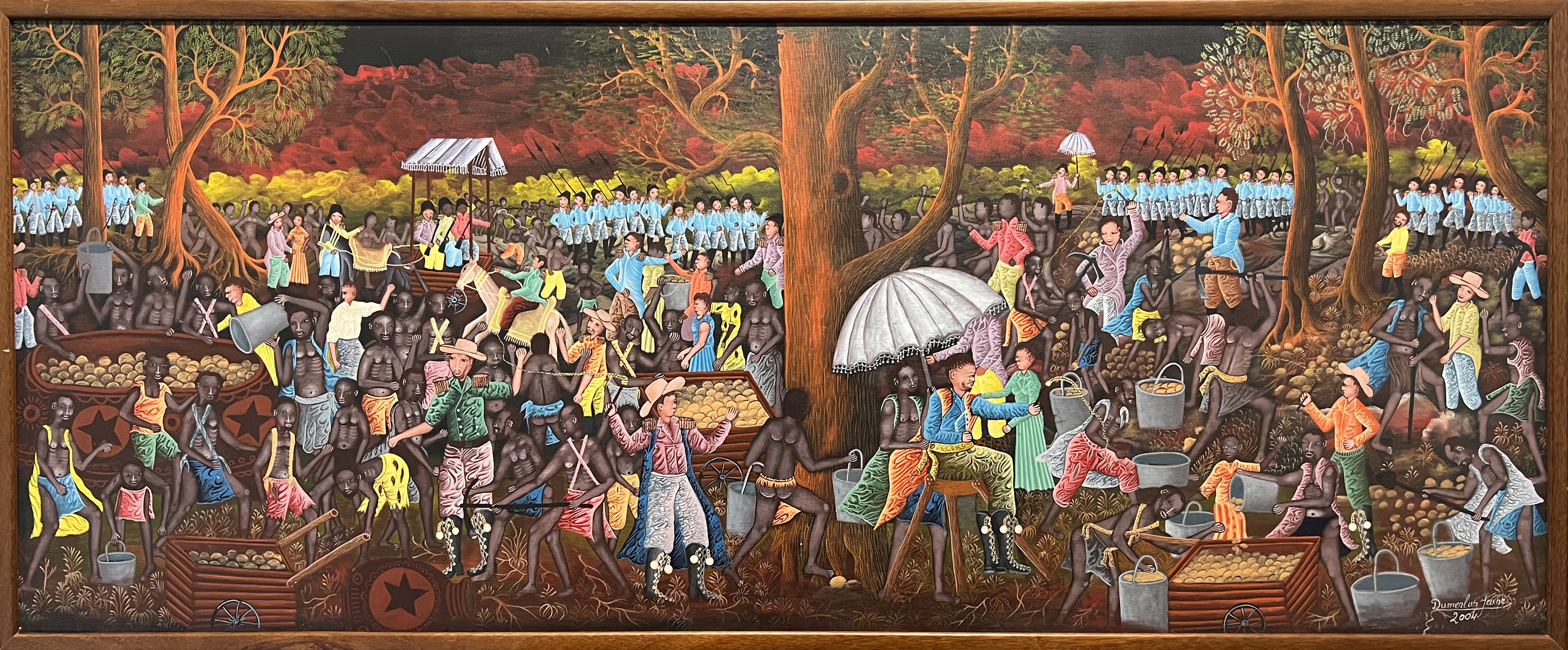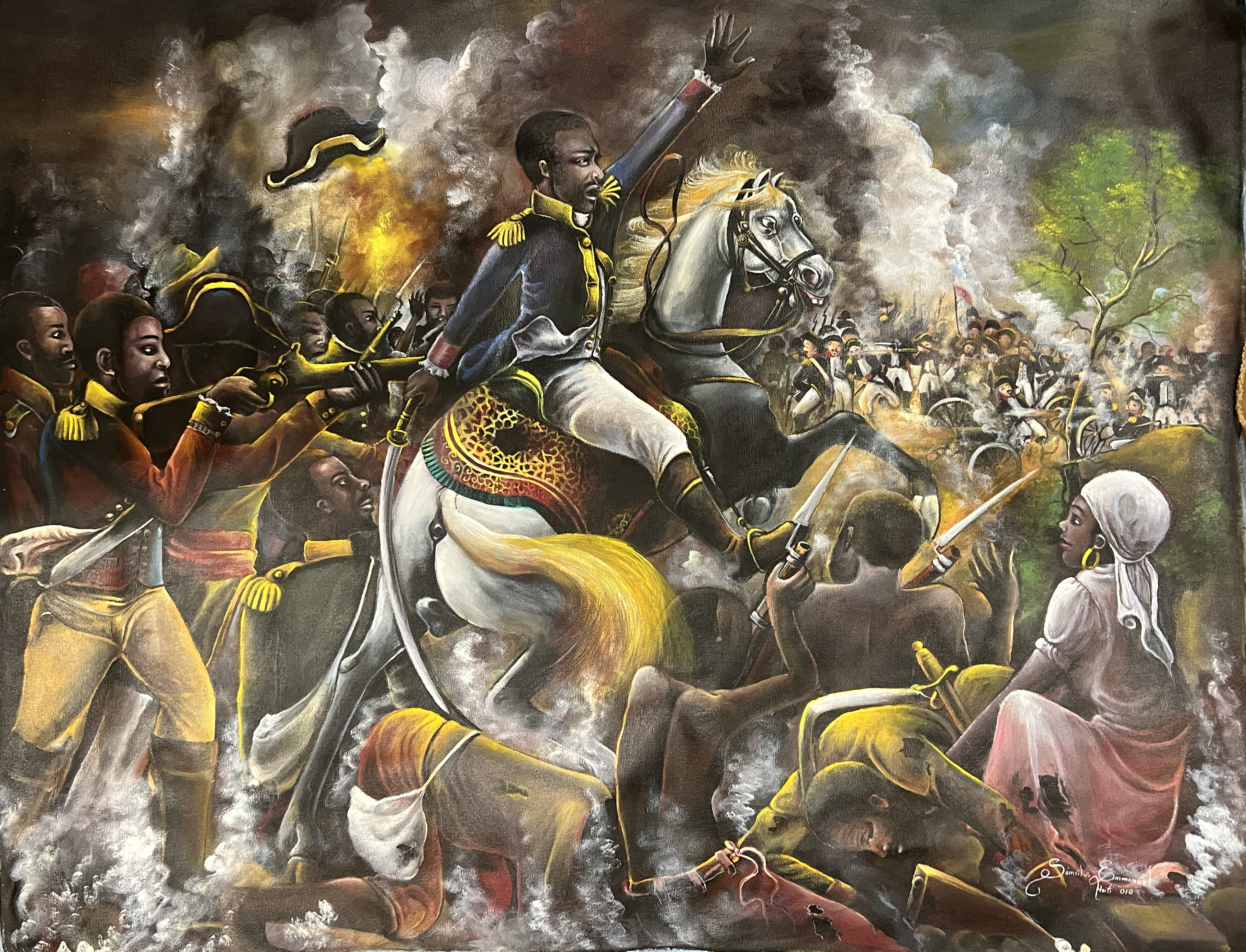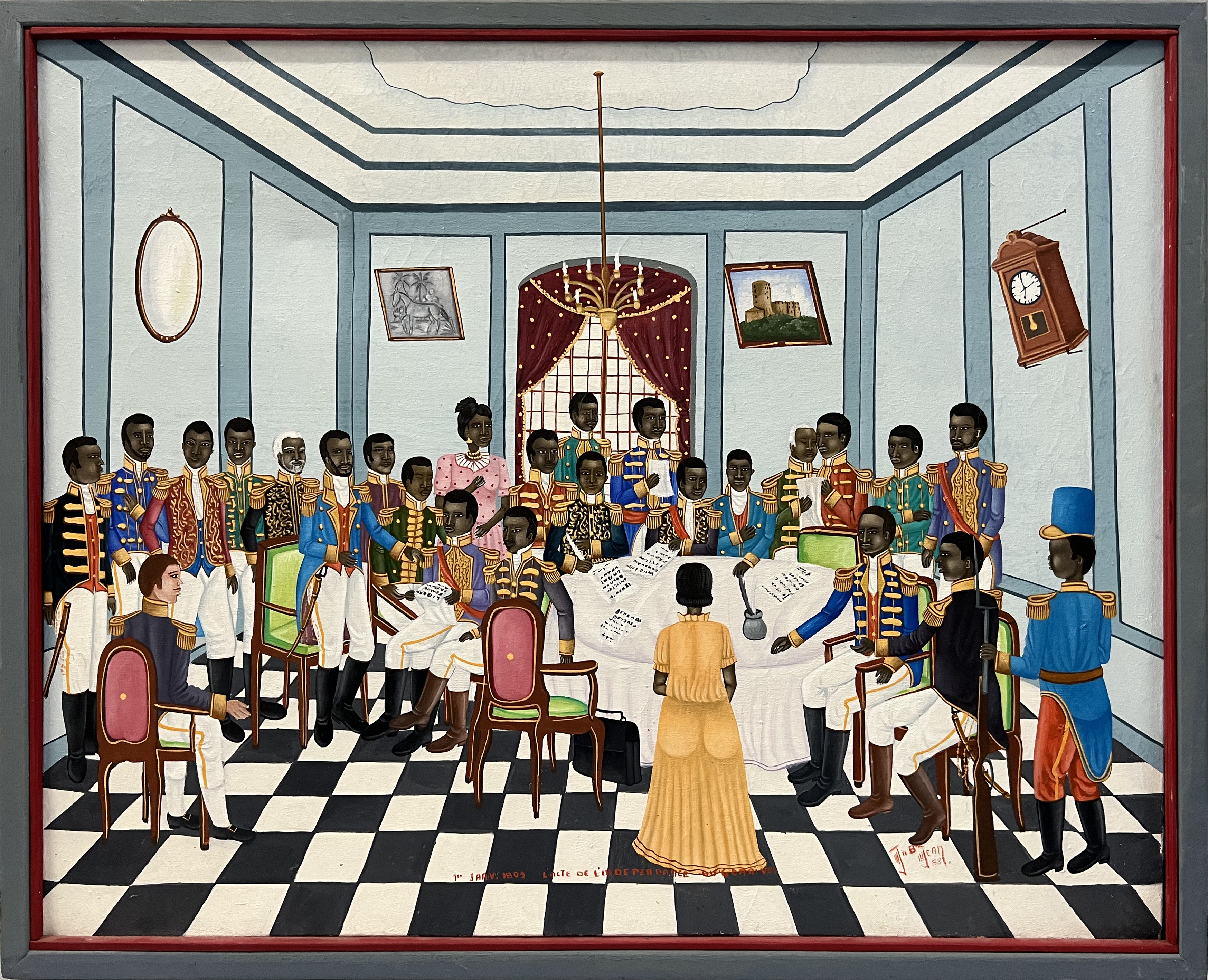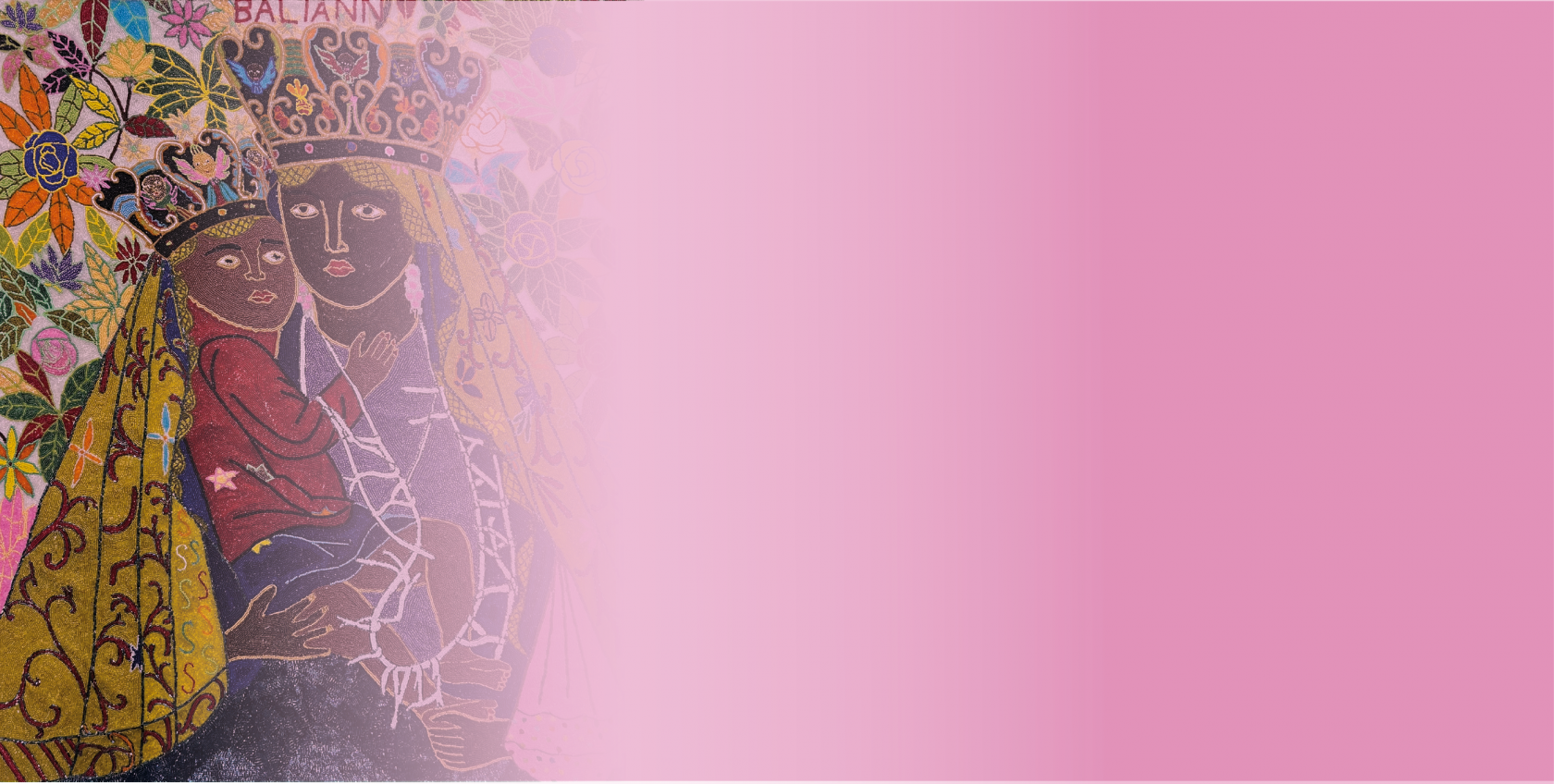
Colonialism and Revolution
Timeline
Circa 5000 BCE – First humans occupy Ayiti
1492 – Columbus arrives and establishes a small settlement on the island’s north coast
1501 – First enslaved Africans forcibly brought to Hispaniola by the Spanish
1521 – First major slave revolt occurs on Diego Columbus’ (son of Christopher) sugar plantation
1697 – Spain cedes the western portion of Hispaniola to France
1791 – Major slave revolts begin
1804 – Haitian revolutionaries under Jean-Jacques Dessalines declare independence from France
Colonization
Inhabited by humans since at least 5,000 B.C.E., Haiti (Ayiti) was the earliest site of European imperialism and Indigenous resistance in the Americas. Soon after Columbus arrived in 1492, he set up a small outpost at La Navidad on the island’s northern coast. When Columbus returned, the Indigenous people had defeated all the settlers. However, the Spanish soon built a new settlement on the island’s southeastern coast, which they named Santo Domingo. The Spanish mining for gold enslaved Indigenous Ayitians for that purpose. Given the genocide of Indigenous Ayitians from brutal treatment and disease, the Spanish replaced them with enslaved Africans who began being transported to the island in 1501.
In 1625, French buccaneers on the nearby island of Tortuga seized the western part of Hispaniola. In 1697, the Spanish ceded the island’s western portion to the French. The French translated the Spanish name to Saint-Domingue, the current-day Republic of Haiti. Like the Spanish, the French relied on enslaved African labor to cultivate sugarcane and other cash crops. Saint-Domingue quickly became the most lucrative colony in the world. France’s profit came at a devastating human cost: between 25,000 and 40,000 enslaved Africans died each year from punishments, labor conditions, disease, and suicide.
 Dumerlus Jeune Dumerlus JeuneSlavery Haiti Friends Collection |
The life of exploitation and oppression is captured in this painting. In the foreground, white colonizers are forcing enslaved individuals to extract gold. The enslaved workers are shown in various states of suffering, exhaustion and despair, highlighting the brutal conditions they endure. In the background, soldiers stand guard, adding a layer of intimidation and control and emphasizing the power dynamics at play. The overall composition of the painting illustrates the harsh realities and injustices faced by the enslaved people.
Revolution
From 1791 to 1804, a series of successful slave rebellions, revolts, and revolutionary battles led to overthrowing French colonial rule in Saint-Domingue. In 1794, the Haitian Revolution brought slavery to an end in the colony and throughout the French Empire. However, in 1802, French military and political leader Napoleon Bonaparte reinstated slavery throughout France’s colonies, with the practice continuing until 1848. Even so, the 1794 emancipation decree was a significant step toward the elimination of slavery in the Americas. By 1804, the Haitian revolutionaries declared independence from France, and Haiti became the second independent country in the Americas (after the U.S.) and the first Black Republic in the world. It is notable that the U.S. did not recognize the independence of Haiti until 1862.
History Through Art
Haitian art is a powerful visual narrative portraying the nation’s history and revolutionary spirit. The artwork captures the intensity of the liberation struggle, showcasing scenes of battles, rebellions, and the courage of the Haitian people against colonial oppression and enslavement. Through their creations, Haitian artists pay homage to the sacrifices of their ancestors and emphasize the continued importance of freedom and sovereignty for Haiti.
 The Lion of Arcahaie The Lion of ArcahaieJasmine Joseph (1924-2005) Port au Prince, Haiti Ca. 1950 Clay Loan from collection of Joel Aaronson and Claire Keyes |
Jasmine Joseph was one of the best Haitian artists of the mid-twentieth century. He originally began as a sculptor fashioning figures and fantastic animals from clay, but he turned exclusively to painting in the late 1950s. This figure of The Lion of Arcahaie is his representation of the lions that appeared on some historical Haitian Coats of Arms.
 The Battle of Vertière The Battle of Vertière Emmanuel Saincilus Haiti Friends Collection |
This is a vivid portrayal of the Battle of Vertière on November 18, 1803, which marked the final major battle of the Haitian Revolution. Jean-Jacques Dessalines and François Capois, both of whom were born into slavery, led a persistent and fierce attack on the strategic French Fort of Vertières in northern Haiti. The French army surrendered. Two months later, Haiti declared its independence from France.
 The Generals (General yo) The Generals (General yo)Jean-Baptiste Jean, 1953-2002 Haiti Friends Collection |
This compelling painting captures a pivotal moment in Haitian history, depicting a high-stakes meeting led by the general of the Haitian army. The scene unfolds in the aftermath of Haiti's hard-won independence in 1804, as the nation's leaders brace themselves for the potential return of French forces. The image serves as a testament to the foresight, courage, and strategic acumen of Haiti's early leaders, who understood that independence, once achieved, must be vigilantly maintained.


